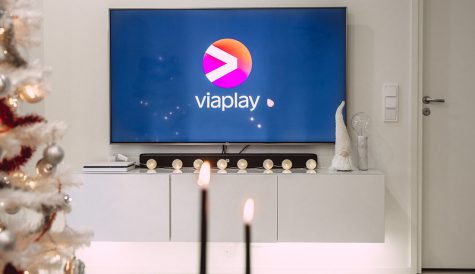Standard issues
IPTV services continue to develop and grow but operators are keenly aware of the need for standardisation of the technologies that support them.
One of the most pressing issues for IPTV operators is standards – the need for standards in delivering IP video to and around the home, and for greater interoperability of customer premises equipment. Some operators are enjoying considerable success in their respective pay-TV markets, yet appear frustrated at the lack of unifying standards that could cut lengthy (and expensive) integration battles, and lessen the risk of equipment obsolescence.
IPTV operators by and large remain upbeat regarding the future of their services. At this year’s IPTV World Forum, Paul Berriman, chief technology officer of Hong Kong’s PCCW said that the benefit of its IPTV service Now TV in reducing churn is “huge”, adding that PCCW currently has around double the ARPU of its nearest broadband competitor, saying that it has “breathed a new lease of life” into the company’s broadband services. Solid subscriber additions have continued to be posted this year (AT&T alone added over 280,000 subscribers for its ‘U-verse TV’ service in the first quarter of this year), despite the ongoing problems with the global economy.
Technical challenges
Richard Griffiths, director of TV and entertainment at Irish telco Eircom, has seemed upbeat about the prospect of launching IPTV in Ireland this year: “This is a fantastic opportunity for Eircom, as the tier-one telco in Ireland, to be launching IPTV in 2009,” he said. “The supplier industry in the IPTV world is now sufficiently mature that the IPTV platforms have their bugs ironed out and can deliver a feature-rich service, and thus Eircom is not going to have to go through such an extensive product development phase as was the case in 2003 or 2004.”
Nevertheless, the main challenges remain technology-related. Madeleine Forrer, vice-president of Video Services at the National Rural Telecommunications Cooperative (NRTC) in the US, said earlier this year: “Right now, the biggest challenge continues to be technical. The network must be able to successfully support at least one gigabyte of multicast traffic. Accomplishing that in an environment without standards and its own version of ‘plug and play’ makes the technology challenging.”
Ben Schwarz, principal consultant at consultancy firm Farncombe Technology, concurs: “I’d say the big challenge for the industry – linked to the work of the Open IPTV Forum – is to integrate standards into the set-top box, rather than just on the server side.” He also believes that one of the major issues for IPTV operators is finding themselves in an increasingly HD world: “High-definition content seems to be a terrible threat to DSL-based IPTV services – the challenge for a DSL operator is ‘what do I do while waiting for a fibre network?’”
 The NRTC’s Forrer says: “It’s time for some common standards and interoperability of equipment. This is crucial to reducing the cost of delivering service and will ensure that a telco isn’t left out in the cold if one equipment provider goes out of business. And, finally, with standards should come the certification of solutions, which would give telcos a greater confidence and might enable more to move into video.”
The NRTC’s Forrer says: “It’s time for some common standards and interoperability of equipment. This is crucial to reducing the cost of delivering service and will ensure that a telco isn’t left out in the cold if one equipment provider goes out of business. And, finally, with standards should come the certification of solutions, which would give telcos a greater confidence and might enable more to move into video.”
One content player seemingly determined to tackle the absence of standards is the BBC, via its Project Canvas initiative (in partnership with fellow public service broadcaster ITV and UK telco BT). The BBC’s presence at this year’s IPTV World Forum was notable, with Richard Halton, programme director of IPTV, delivering a keynote in which he said that one purpose of Canvas is to bring a standards-led approach to new delivery mechanisms, making content available without repurposing (which would have obvious benefits for the broadcaster). Halton also emphasised that Canvas is not an attempt to create new standards, but rather to bring together existing standards from the telecoms and broadcasting industries.
Rahul Chakkara, controller of future media TV platforms at the BBC, added: “We strongly believe that, based on our success with Freeview and Freesat, a standards-based model is the most beneficial for the industry, the content publisher and – most importantly – for our audiences. Project Canvas is about setting a set of specifications for the IPTV industry which brings together the richness of broadcast with the power of broadband.”
In the wider IPTV world, much remains to be done. Lisa Feliciantonio, head of content and IPTV regulation at Italian telco Fastweb, stated in an interview earlier this year: “In the medium to long term, I believe that a progressive standardisation of technologies, platforms and possibly market proposition is the key to turning IPTV into a mass-market proposition.” Her company together with Telecom Italia and Wind formed the Italian Association of IPTV Operators, with the intention of joining forces to “create awareness in the market and with the policy makers regarding the potential of IPTV and its role in the industry value chain”. Italian newspaper reports have suggested that the three operators are joining forces to create a standard for IPTV set-top boxes across all three IPTV services as well as DTT and DTH , which would lower development and production costs. Giovanni Moglia, director for legal and regulatory affairs at Fastweb and president of the association, said in an interview in March: “As far as Italy is concerned, IPTV operators have to focus on developing an offer and a common strategy to take advantage of the upcoming switch-off of analogue television transmissions. The switch-off will represent a major disruption in the habits of TV viewers and force most families, even the less technologically advanced ones, to purchase a digital device to keep receiving television.” The development of a new set-top box based on common standards and capable of receiving DTT transmissions as well as IPTV from any of the country’s three operators would certainly help them achieve that goal.
The need for standards is not just felt by operators. “We would love to have an interoperable standardised environment to work with. We want to stick to what we do best – telling wonderful stories,” Myles MacBean, vice-president of Disney Online, said earlier this year. There was “a major cost element in customising the experience for each ISP and for different CE devices – we would rather build these experiences on a pan-European scale.”
Compression
IPTV technology suppliers could help operators through continuing improvement of compression and distribution solutions, according to Peter Li, vice-president of Shanghai Media Group’s IPTV service BesTV: “The first priority for the IPTV industry in a developing country such as China is to quickly scale up the subscriber base to move the industry to the self-sustainable stage. To accomplish that, we have to provide good enough services in many areas with bandwidth of around 2Mbps. Therefore, continuing improvement in compression technology to enhance picture quality at below 2Mbps bandwidth is important for us. Another area with strong consumer demand is the number of hours of on-demand content available to a subscriber at one given time…. We would like to see efficient distribution technology for a massive quantity of video content, in order for users to really enjoy the long-tail benefit of internet characteristics.”
Also, there remains work to be done on data mining and on advanced content discovery engines, according to Eircom’s Griffiths: “There needs to be greater intelligence in data mining. For example, if children’s programming is known to be popular in home A, then it is likely that there will be children living in that household. But there is no point in running an advert for children’s products at ten o’clock at night, when they will be tucked up in bed. The platform needs to be able to do that…. A service also needs to have advanced content discovery tools or engines and sophisticated search tools, otherwise users won’t get beyond the A and B listings of the VOD service.”
“I believe that a progressive standardisation of technologies, platforms and possibly market proposition is the key to
turning IPTV into a mass-market proposition.”
Lisa Feliciantonio, Fastweb
Significantly, he adds: “An IPTV service also needs to have an open, easy-to-develop-for applications platform, where an operator can easily add such things as casual games and flight arrival times, for example. It has to be made cheap and easy to develop applications for the service and deliver them onto the set-top box. The strengths of an open-standards web browser as a platform facilitates this, as well as a sophisticated graphical interface through technologies such as Flash, Java and Scalable Vector Graphics (SVG). We need it to be cheap to develop applications for the set-top box, and need to be able to run them quickly and responsively.”
PCCW’s Berriman reitirated this need for an enhanced user interface when speaking at the IPTV World Forum, stating that the more interactive services PCCW has developed, the more difficult it is for subscribers to find and use them. However, the move to a more sophisticated user interface has ameliorated this, he added, enabled by more advanced set-top boxes.
Concerning the future of IPTV, Christopher Schläffer, chief innovation officer at Deutsche Telekom, said that “the future is soft”, and will be based on software and service delivery, rather than hardware. Schläffer added that content richness is “of the essence” when it comes to a successful IPTV service, and that he believes the categories of internet TV (Joost, iPlayer etc), web video (YouTube and other on-demand video) and managed network IPTV services such as Deutsche Telekom’s T-Home Entertain will eventually converge.
This perception that “the future is soft” appears to be backed up by Orange, whose SoftAtHome initiative (set up last year with Thomson and Sagem Communications) is intended to enable service providers – including presumably Orange – to deliver convergent applications through an operating platform for the digital home environment. Orange certainly knows about IPTV, having passed 2.5 million pay-TV subscribers worldwide by the end of March 2009, up 75% year-on-year, with its domestic IPTV service nearing two million customers and its new Spanish IPTV service enjoying notable success, amongst other highlights.
Most realise however that it is not just pin-sharp UIs and more advanced interactive services that make an IPTV service well-subscribed – fundamentally, it is about the content. Eircom’s Griffiths believes the content industry is now “much more aware” of what IPTV is and how it works, adding: “While the big boys such as the Hollywood studios are ever keen to license their content for healthy minimum revenue guarantees, we are finding that the smaller production companies also now see IPTV as another outlet for them to monetise their content.”
From a major content provider’s point of view, Simon Amselem, senior vice-president of channel distribution (EMEA) at Disney-ABC-ESPN Television, says that the company likes “speaking to operators that have a content focus at the heart of their strategies, and that plan to use content to drive their business – the operators that place the consumer first. We think that the consumers don’t care about the technology; they want something that is simple to use and simple to understand.”
Thomas Lemaire, senior director of business development in North America for Orange, backs up this need for operators to pursue a strategy of focusing on delivering strong content plus converged services.
“Two things will make the IPTV value proposition stronger and more differentiating: original content and convergent services that blend the TV experience with broadband and mobile services,” says Lemaire. “To make this happen you need some scale but also experimentation, an understanding of how the TV experience will become interactive without replicating the PC experience and its hurdles.”
Future vision
As far as the future goes, Lemaire says: “We believe content everywhere is the future of the pay-TV industry. What that means is the best content, available at any time and on any screen (TV, PC and mobile). Customers don’t want to be constrained – they want to watch shows when they are ready so catch-up TV, rewind TV and VOD are important components. In addition, TV on the PC and mobile are growing in popularity. With our TV offer content is transferable between and available on all three screens.”
MacBean of Disney Online adds: “The Web has taught us that it is not the technology that is king, nor content, but the consumer. We are getting to that point where every part in the chain is benefitting from IP delivery. The business models are still evolving, as is the content proposition, the platform’s capability, and consumers’ expectations and needs, but it is a non-linear situation as everything is affecting everything, which makes it exciting.”
The industry currently finds itself in a situation of continued healthy IPTV subscriber growth worldwide and new service deployments in all markets, with US research firm MRG finding in its recent IPTV Global Forecast Report that by the end of 2008 the number IPTV subscribers ended up around one million higher than its previous forecast in late 2008 and reached 21.3 million. This figure is forecast to increase from 26.9 million by end-2009 to over 81 million in 2013.
Having got to this point through industry-wide experimentation with evolving technologies, business models and consumer expectations, it appears that what is needed now is a concerted focus on standards-based technologies and interoperability, allied to such things as more sophisticated content discovery engines and search tools, more efficient compression and content distribution technologies, and software that enables the delivery of increasingly advanced converged services, whilst cutting down on time-consuming and expensive integration battles.
Yet paramount to all the above, says Terry Denson, vice-president of content strategy and acquisition at Verizon, is customer service: “Consumers are willing to give new providers and technologies a chance, provided the consumer’s experience with the provider is positive.”
Written by Jamie Beach, online editor, IPTV News website (www.iptv-news.com; [email protected]).
Paul Berriman spoke at the 2009 IPTV World Forum on March 23-25, and will also participate in the IPTV Forum Asia in Hong Kong on December 1 and 2. Richard Griffiths, Ben Schwarz, Richard Halton, Rahul Chakkara, Lisa Feliciantonio, Myles MacBean, Peter Li, Christopher Schläffer and Simon Amselem spoke at the IPTV World Forum in London from March 23-25 this year. Thomas Lemaire, Terry Denson and Madeleine Forrer spoke at the IP&TV Forum North America on July 21-22.



